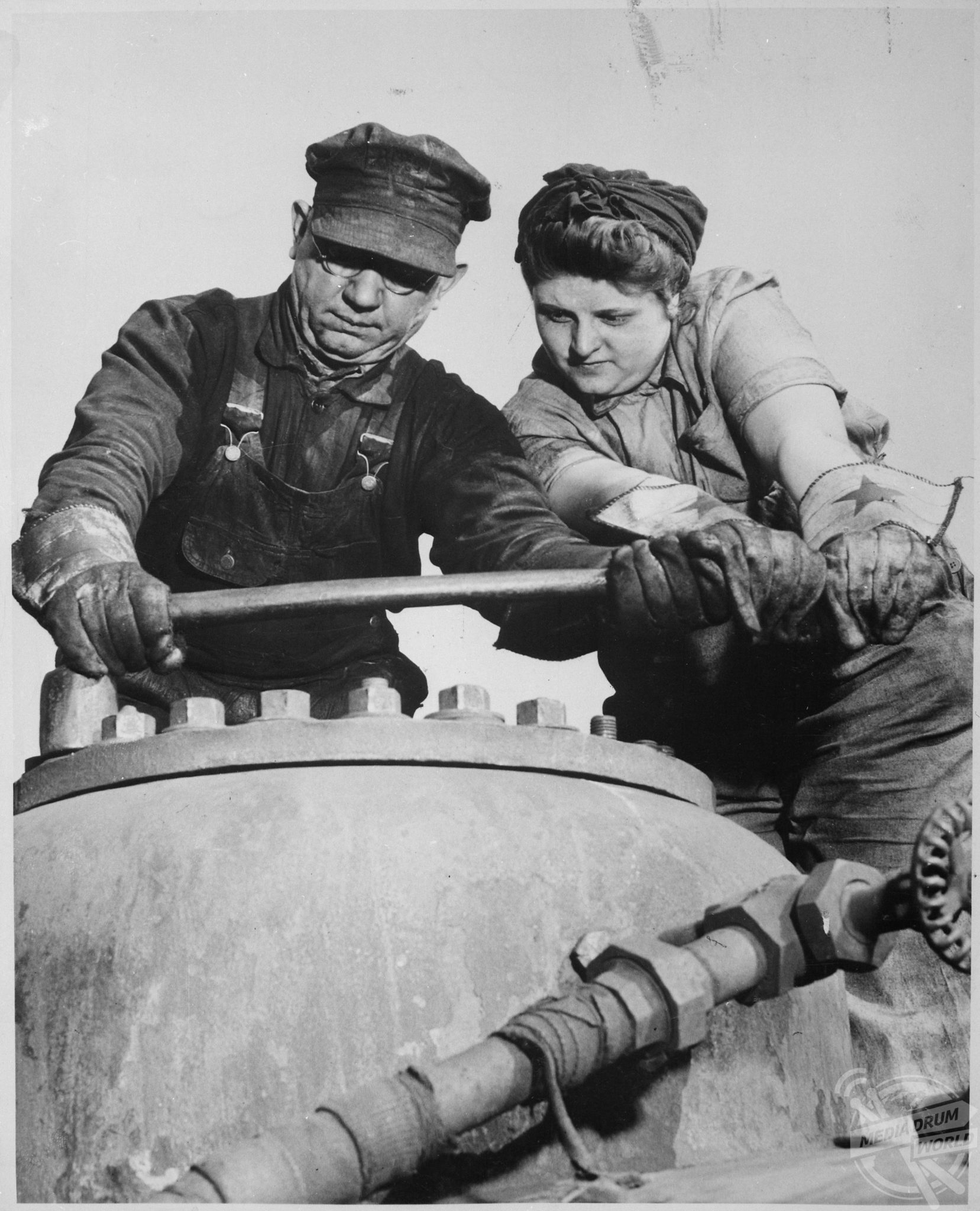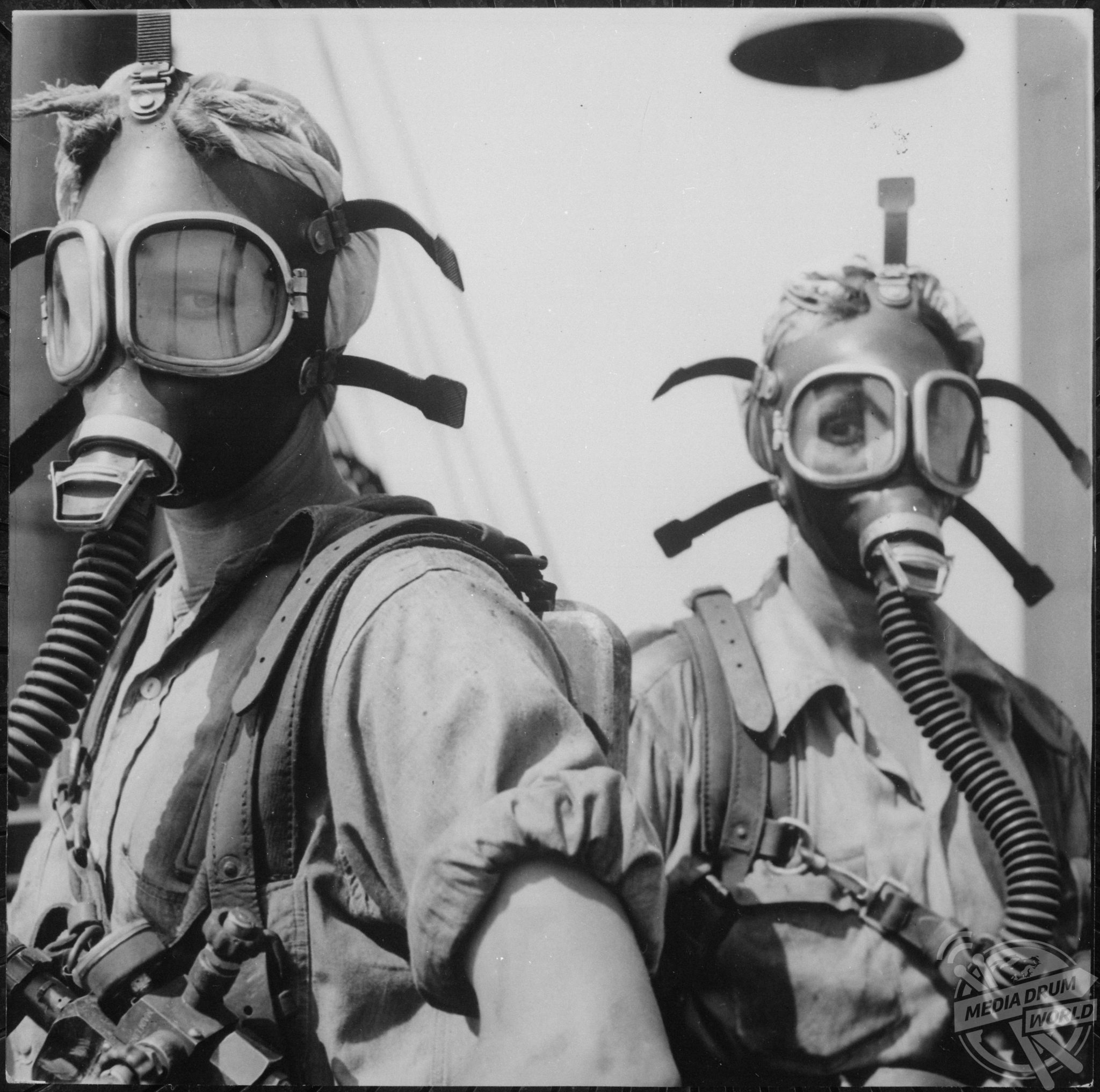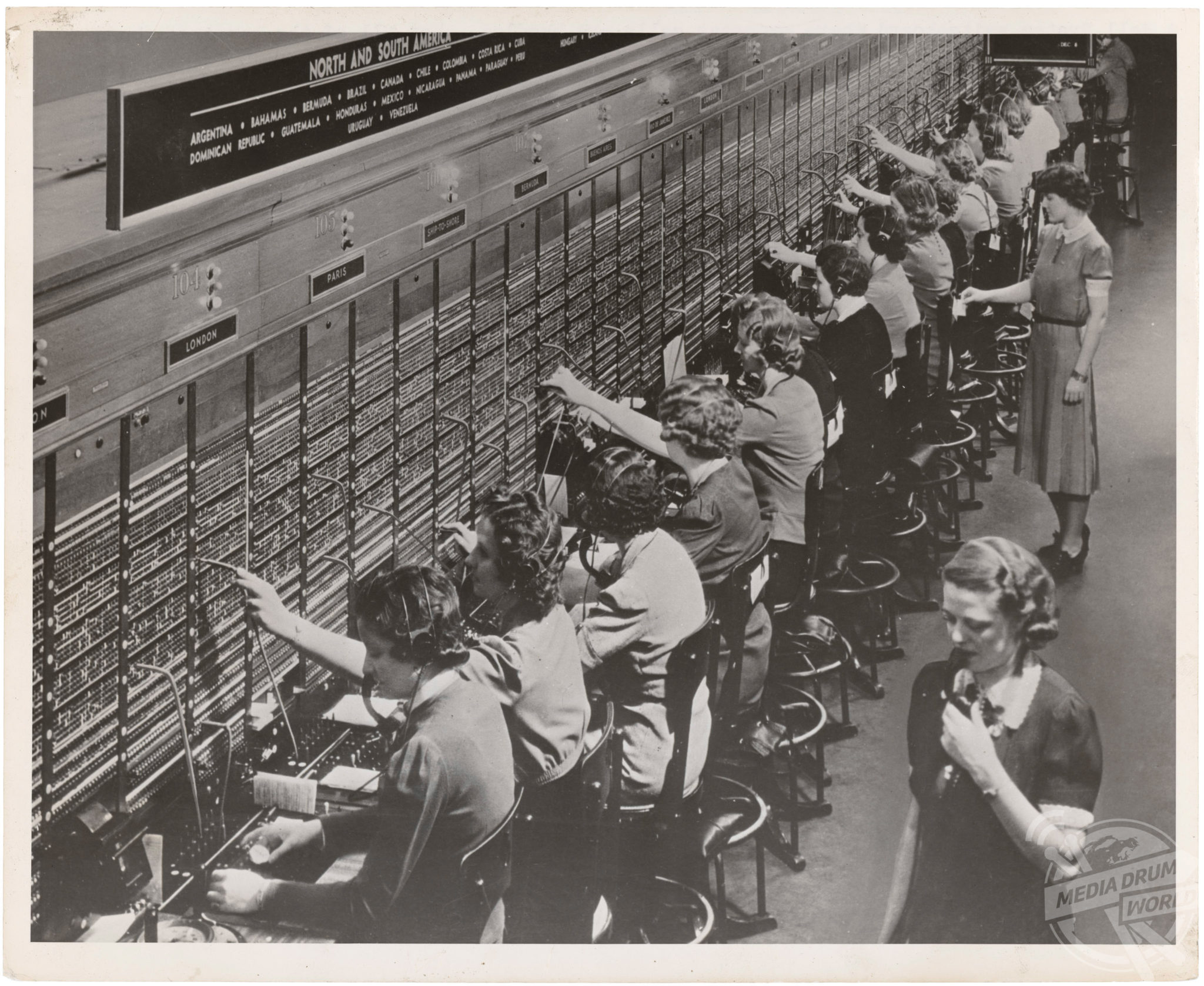By Alex Jones
FASCINATING photos from the Second World War show how invaluable women were to the United States’ war effort – with millions of women picking up the jobs their partners, brothers, sons and fathers had left behind to fight for their country.
Remarkable shots, many of them never published before, show industrious women employed as shipbuilders, railroad staff, and steel workers.

Another remarkable shot shows a female labourer donning a plastic bra, a device which purported to help prevent chest-related accidents in the workplace.
This selection of captivating photographs, from the Records of the Women’s Bureau in the US National Archives, show women for the first time on a mass scale and from every social and economic background performing jobs that have been traditionally considered as ‘men’s work’.

As the United States sent millions of men to war, the country’s mills, factories and workshop needed replacement workers. Women, who traditionally had only been employed in ‘gender suitable’ roles such as admin or waitressing, were suddenly expected to fill the roles left vacant by men.

World War II changed both the type of work women did and the volume at which they did it. Five million American women entered the workforce between 1940-1945. In particular, World War II led many women to take jobs in defence plants and factories around the country. These jobs provided unprecedented opportunities to move into occupations previously thought of as exclusive to men, especially the aircraft industry, where a majority of workers were women by 1943.

Despite doing the same jobs as their male counterparts, women rarely received the same level of financial compensation. However, their work undoubtedly boosted the United States’ war effort and acted as a foundation for the equal rights battle which dominated the latter half of the 20th Century.







